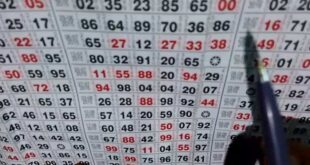Here’s a consolidated overview of information related to leap years, starting with the next leap year and covering various aspects.
Next Leap Year: Following the rule that a leap year occurs every four years, will be in 2024.
Leap Year Overview:
- These years have their origins in the calendar reform introduced by Julius Caesar in 45 BCE.
- The Julian calendar, introduced by Caesar, included the leap year rule, adding an extra day every four years to align the Roman calendar with the solar year.
- The Julian calendar was reformed by Pope Gregory XIII in 1582, resulting in the Gregorian calendar being used worldwide today.
Leap Day Traditions:
- Did you know that February 29th only appears during a leap year?
- This Day is associated with customs and traditions across various cultures. In Irish folklore, it is customary for women to propose to men on this day.
Leap Year Babies:
- Have you heard of “leap day babies” or “leaplings”? These are individuals who are born on February 29th.
- These babies, born on February 29th, celebrate their birthdays less frequently. In non-leap years, they often choose to celebrate on February 28th or March 1st.
Mathematical Patterns:
- Due to the rule of adding an extra day every four years, these years follow a predictable pattern in the Gregorian calendar.
- Mathematicians find the consistent pattern of this phenomenon intriguing, as it aids in performing various calculations related to dates.
Astronomical Synchronization:
- The rule for leap years approximates the Earth’s orbit but isn’t exact.
- To align atomic time with astronomical time, a leap second may be added or subtracted from Coordinated Universal Time (UTC) periodically.
Ancient Origins:
The ancient practice of adding an extra day to the calendar to account for the Earth’s orbit dates back to early civilizations. For instance, the ancient Egyptians included an extra day in their calendar roughly every four years.
Calendar Drift:
Over time, without the inclusion of this year or calendar adjustments, the calendar would eventually become unsynchronized with the seasons. As a result, events like the vernal equinox (the start of spring) could occur at varying points throughout the year.
Leap Seconds:
To ensure that our clocks stay synchronized with the Earth’s rotation, Coordinated Universal Time (UTC) occasionally adds or subtracts leap seconds. These adjustments are made at the end of a year or the end of June and take into account variations in the Earth’s rotation. This helps to maintain the accuracy of our timekeeping systems over time, alongside these years.
Centesimal Leap Years:
These years are determined by the Gregorian calendar, which follows the rule that any year divisible by 4 is a leap year. However, there are exceptions to this rule. In a century year, that year is only considered if it’s divisible by 400. For example, 1900 wasn’t, but 2000 was.
Impact on Timekeeping:
Leap years and seconds are crucial for maintaining accurate timekeeping in various fields, including astronomy, telecommunications, and GPS.
Cultural References:
The concept of these years has inspired storytelling and humor, making its way into literature, movies, and folklore. One example is the 2010 romantic comedy “Leap Year,” which revolves around the tradition of women proposing to men on this Day. The unique characteristics of these years offer endless opportunities for creative expression.
Global Adoption:
The Gregorian calendar, with its leap year system, is the most widely used civil calendar worldwide. However, some cultures and regions still use different calendar systems with their own methods for adjusting to the Earth’s orbit.
Leap Year Records:
Some people have taken advantage of these years to achieve unique events, such as setting world records for the most leap-year babies born at once.
The concept of these years is fascinating since it reflects our efforts to align our calendar systems with the Earth’s orbit around the sun. In various aspects of modern society and culture, these years continue to serve a crucial purpose. These are fascinating aspects of our calendar system, blending historical significance, cultural traditions, mathematical precision, and astronomical considerations to keep our calendars in sync with the Earth’s orbit around the sun.
The above given are taken from various sources including Google, chat GPT, and many other websites. The data is considered more valuable to the researchers and analysts. Find the different kinds of details from various aspects and interesting facts about 29th February, which occurs once in four years.
Shalkot with the collaboration of Innovators is striving continuously to provide you with interesting facts and figures about various theories, researches, terms, and many many more. There is a huge collection of interesting facts and figures.
Explore Shalkot
 Shalkot The Innovators
Shalkot The Innovators




